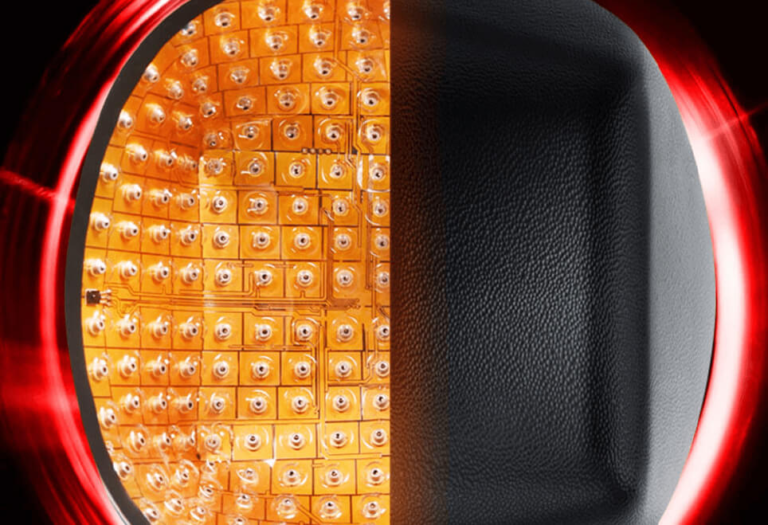Hair loss is a common concern for millions of people worldwide, affecting both men and women. As people search for effective and convenient solutions, low-level laser therapy (LLLT) devices like hair growth laser caps are gaining popularity. These devices offer a non-invasive, pain-free, and easy-to-use alternative for promoting hair regrowth, but are they worth the investment? This article explores how laser caps work, the scientific evidence supporting their efficacy, potential benefits, and what to consider before purchasing one.
Understanding How Hair Growth Laser Caps Work
Laser caps use low-level laser therapy (LLLT) to stimulate hair follicles and encourage regrowth. The therapy involves emitting safe, low-energy red or near-infrared light onto the scalp. This light penetrates the skin at specific wavelengths that have been shown to boost cellular activity, which is believed to help revive dormant hair follicles and improve the health of existing ones.
- Low-Level Laser Therapy (LLLT): Laser caps generally operate in the red-light wavelength spectrum, typically between 630-670 nanometers (nm). This light energy is absorbed by cells in the scalp, which promotes cellular repair, increases blood flow, and delivers essential nutrients to hair follicles. Research has shown that these specific wavelengths can stimulate the anagen (growth) phase of the hair cycle, which may enhance hair density and thickness.
- Photobiomodulation (PBM): The primary mechanism of LLLT is photobiomodulation, where photons from the laser light interact with cytochrome C oxidase, an enzyme in the mitochondria. This interaction boosts cellular metabolism, potentially leading to increased ATP production. For hair follicles, this means they may become more active and stay in the growth phase longer, contributing to healthier hair strands and reduced sheddinge Science Supporting Laser Caps for Hair Growth
The effectiveness of LLLT for hair loss has been studied extensively, with multiple peer-reviewed studies supporting its potential benefits. Below are a few significant findings:
- Clinical Studies: A 2014 study published in The American Journal of Clinical Dermatology found that participants who used a laser comb (an early form of LLLT device) saw an increase in hair density compared to those who received a placebo treatment. This study indicated a statistically significant improvement in hair regrowth after 26 weeks .
- sis: In 2017, a systematic review and meta-analysis of 11 randomized controlled trials on LLLT devices for hair loss concluded that LLLT could be an effective treatment for both male and female pattern hair loss. The analysis noted that consistent use of LLLT could lead to higher hair density and thickness with minimal side effects .
- FDA-Clear: Many LLLT devices, including laser caps, are FDA-cleared for use in treating androgenetic alopecia (pattern hair loss) in both men and women. This clearance means that the devices have undergone safety and efficacy testing, offering reassurance to potential users regarding their reliability.
Potential Benefits of Hair Growth Laser Caps
Laser caps are marketed as a convenient solution for promoting hair regrowth. Here’s a closer look at the potential benefits they offer:
1. Non-Invasive and Pain-Free
Unlike surgical options like hair transplants, laser caps are non-invasive. They don’t require needles, incisions, or recovery time, making them a popular choice for those who want a more comfortable, pain-free option.
2. Safe for Long-Term Use
Since LLLT uses low-power lasers, laser caps are generally considered safe for long-term use. They don’t produce UV rays and are not known to cause burns or other skin damage. Unlike some topical treatments, which may have side effects like skin irritation, LLLT has minimal reported adverse effects.
3. Convenient and Easy to Use
Laser caps are designed to be worn for about 20-30 minutes a few times a week, often with no disruption to daily activities. Users can wear them while doing chores, working on a computer, or watching television. This convenience makes them easy to incorporate into a regular hair care routine.
4. Improving Hair Thickness and Density
Studies and user reports suggest that laser caps may help improve hair thickness and density by stimulating hair follicles to produce healthier, thicker strands. This improvement may be especially beneficial for individuals experiencing the early stages of hair thinning.
What to Expect When Using a Laser Cap for Hair Regrowth
It’s important to set realistic expectations with laser caps. Generally, users of Hair Pro from BeWellFinder may begin to notice subtle improvements after 3-6 months of consistent use, with more visible results around the one-year mark. The effectiveness can vary based on individual factors like age, genetics, and the underlying cause of hair loss. Here’s a breakdown of what a typical journey with a laser cap might look like:
- First 3 Months: Initial adaptation phase; some users experience a shedding phase as dormant follicles begin to shed weaker hairs to make room for new growth.
- 3-6 Months: Noticeable improvement in hair texture and thickness; hair shedding may decrease.
- 6-12 Months: Continued thickening of existing hair, with more noticeable results in terms of density and coverage.
Cost vs. Value: Is a Hair Growth Laser Cap Worth It?
The cost of laser caps ranges from $500 to over $3,000, depending on brand, laser coverage, and device technology. While this may seem expensive initially, it’s helpful to compare it to the costs of alternative treatments:
- Minoxidil and Finasteride: These are popular FDA-approved treatments for hair loss. However, both need to be used continuously to maintain results, and stopping treatment can lead to hair loss recurrence. In the long term, the cost of monthly treatments can add up significantly.
- Hair Transplant Surgery: Hair transplants can cost anywhere from $4,000 to $15,000, depending on the extent of hair loss and the clinic. Additionally, surgical options come with risks and require downtime for recovery.
- Salon and Topical Treatments: Many salons offer treatments promising hair regrowth, but these are often expensive, require multiple visits, and may offer only temporary improvements.
Considering these factors, a one-time investment in a high-quality laser cap may be a cost-effective alternative for many users, especially for those looking for a convenient, home-based solution.
Factors to Consider Before Buying a Laser Cap
If you’re considering investing in a laser cap, here are some factors to evaluate:
- FDA Clearance: Choose an FDA-cleared device to ensure it has undergone safety testing.
- Laser Density: Higher laser density generally means better coverage and potentially better results. Some caps offer more lasers than others, which can improve scalp coverage.
- Warranty and Return Policy: Many reputable brands offer a warranty and a return policy. This is helpful in case the device doesn’t meet your expectations.
- Professional Guidance: Consulting a dermatologist or trichologist can provide insights on whether a laser cap is suitable for your type of hair loss and help manage expectations.
Conclusion: Is a Hair Growth Laser Cap Right for You?
Laser caps can be a valuable tool for individuals seeking non-invasive, at-home options for managing hair loss. Scientific studies indicate that they can improve hair thickness and density, especially for people in the early stages of hair thinning. While they require an upfront investment, laser caps may offer a cost-effective, long-term solution compared to other treatments.
Ultimately, whether a laser cap is worth the investment depends on individual preferences, budget, and hair loss goals. Those interested in trying laser therapy should ensure they choose a reputable, FDA-cleared device and remain patient, as consistent use over several months is key to seeing meaningful results.





